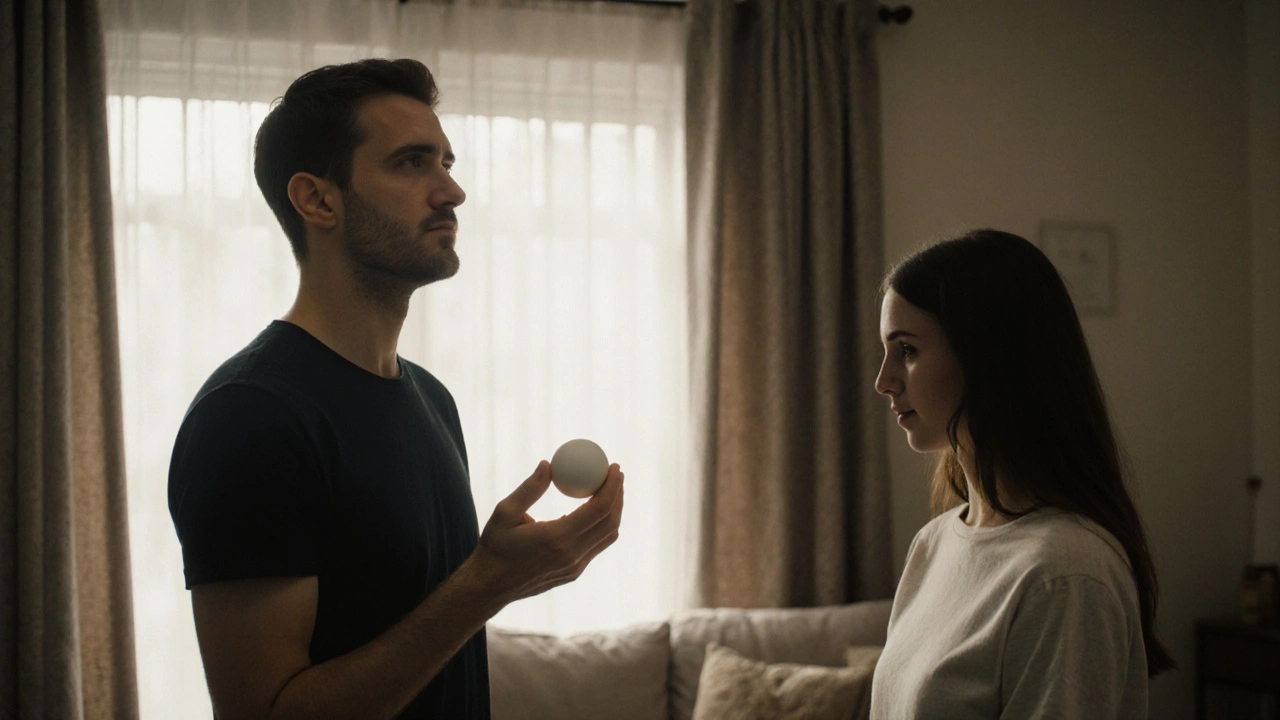Ever watched a mentalist pick up a small ball, hold it in their hand, and then somehow guess exactly where you hid it-without ever seeing you move? It feels like mind reading. But it’s not. The ball trick isn’t magic. It’s psychology, misdirection, and a few well-timed moves that fool your brain into thinking something impossible just happened.
The Setup: It’s Not About the Ball
The ball itself is usually a small, smooth object-sometimes a ping pong ball, sometimes a golf ball, occasionally a specially weighted plastic one. It doesn’t matter what it is. What matters is how it’s used. The mentalist never asks you to pick a spot. Instead, they say something like, ‘I’m going to close my eyes. You hide the ball anywhere in this room. When I open them, I’ll know where it is.’ You feel in control. You think you’re choosing. That’s the first trick.The real secret? You’re never really choosing. The mentalist guides you without you noticing. They’ll walk around the room with you, casually mentioning places: ‘Under the couch? Behind the plant? On the shelf?’ Each suggestion plants an idea. Your brain latches onto one of them-not because you picked it, but because it felt natural. That’s called priming.
The Misdirection: Eyes Are the Enemy
While you’re thinking about where to hide the ball, the mentalist is watching your eyes. Not your hands. Your eyes. People look where they’re thinking. When you decide to hide the ball under the chair, your gaze flicks there before your hand moves. A trained mentalist catches that. They don’t need to see you hide it. They just need to see where you look.And then comes the moment you’re focused on: the mentalist closes their eyes. You think they’re blind. But they’re not. They’re listening. The sound of fabric shifting, the slight scrape of a shoe on carpet, the way your breath changes when you’re nervous-all of it gives away the location. The ball is small. Hiding it takes motion. Motion makes noise. Your brain thinks you’re being quiet. The mentalist knows you’re not.
The Psychological Hook: You Tell Them
After you hide the ball, the mentalist asks, ‘Where did you put it?’ You answer, ‘Under the table.’ They nod. Then they say, ‘I didn’t see you move it, but I felt it. It’s under the table.’ You’re stunned. But you just told them. They didn’t guess. You handed them the answer.This is called the forced choice. You think you picked the location freely. But the mentalist set up the options. Maybe they had you pick from three spots earlier. Maybe they subtly steered you away from the door, the window, or the bookshelf. You didn’t notice. That’s the point.

The Classic Move: The Palming
Some versions of the trick don’t even involve you hiding the ball at all. In these cases, the mentalist secretly palms the ball while pretending to hand it to you. You think you’re holding it. You’re not. They still have it. Then they ask you to think about where you’d hide it. You pick a spot. They guess it. You’re convinced they read your mind.Palming is a classic sleight of hand. It’s not hard to learn, but it takes practice. The ball is held in the palm, pressed against the fingers, hidden by the natural curve of the hand. Most people don’t look closely enough to notice. And when they do, they’re distracted by the mentalist’s conversation, their eye contact, their calm tone. You’re not looking at the hand. You’re looking at the person.
Why It Feels Like Mind Reading
Our brains are wired to find patterns-even when none exist. When the mentalist guesses correctly, your brain doesn’t think, ‘They watched me.’ It thinks, ‘They knew what I was thinking.’ That’s the illusion. The trick works because you assume the mentalist has supernatural power. They don’t. They have training.Studies in cognitive psychology show that people overestimate their ability to hide secrets. In one experiment at the University of Chicago, participants were asked to hide objects while being watched. Nearly 80% believed they were undetectable. Observers correctly guessed the location in 72% of cases-not because they were psychic, but because people give themselves away in tiny, unconscious ways.

What You Can Learn From This
This trick isn’t just about entertainment. It’s a lesson in how easily we’re influenced. The mentalist doesn’t control your mind. They control your attention. They use your own habits-where you look, how you speak, what you notice-to guide you. That’s the same technique used in sales, politics, and even advertising.Next time someone seems to know what you’re thinking, ask yourself: Did they read my mind? Or did I just give them the answer without realizing it?
Can You Try This Yourself?
Yes. But don’t expect to fool everyone right away. Start simple. Use a small object. Practice with a friend. Let them hide it. Watch their eyes. Listen to their breathing. Notice how they hesitate before choosing a spot. Try saying, ‘I think it’s near something soft.’ Most people will think of a couch, a pillow, or a bed. That’s your clue.Don’t try to guess blindly. Wait for the cues. The ball trick works because it’s not about magic. It’s about paying attention.
The Real Trick Is in the Details
The best mentalists don’t rely on one trick. They build a system. They use verbal pacing, body language, timing, and repetition. They’ll say the same phrase three times in slightly different ways. They’ll pause right before the reveal. They’ll smile when you’re distracted. All of it adds up.And the ball? It’s just a prop. The real magic is in the silence between words, the way a person shifts their weight, the split-second glance they give before hiding something. That’s where the truth hides-not in the ball, but in the human mind.


Tarun nahata
November 16, 2025 AT 14:53Aryan Jain
November 16, 2025 AT 18:54Nalini Venugopal
November 18, 2025 AT 17:23Pramod Usdadiya
November 19, 2025 AT 06:51Aditya Singh Bisht
November 20, 2025 AT 07:30Agni Saucedo Medel
November 21, 2025 AT 13:11ANAND BHUSHAN
November 22, 2025 AT 04:41Indi s
November 22, 2025 AT 15:17Rohit Sen
November 23, 2025 AT 12:03Vimal Kumar
November 25, 2025 AT 04:10Amit Umarani
November 26, 2025 AT 10:32Noel Dhiraj
November 27, 2025 AT 12:53vidhi patel
November 28, 2025 AT 16:45